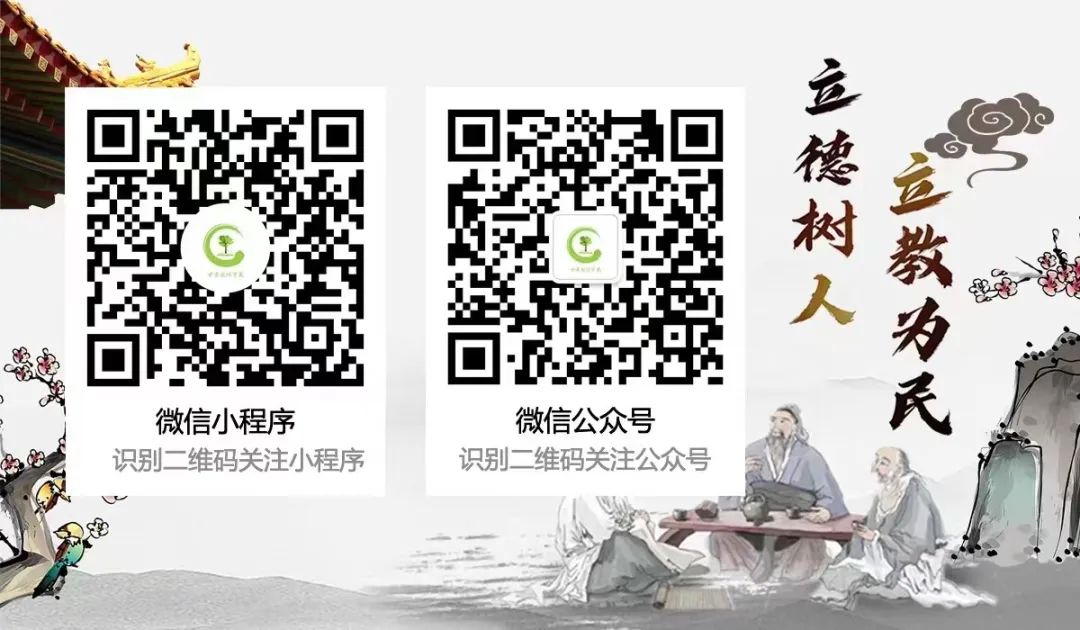In the traditional techniques of Chinese painting, shí (实) refers to the tangible objects and scenes depicted in the artwork, as well as the detailed and rich brushwork; xū (虚) refers to the sparse brushwork or blank spaces in the painting, which provide room for imagination and endless contemplation. Similarly, in poetry, the “shí” (实) refers to the objective realities and facts of the world, while the “xū” (虚) refers to the intangible aspects that cannot be seen or touched, existing within the subjective consciousness of the poet, derived from their imagination.
Previous commentators have remarked on the relationship between reality and illusion with phrases such as: what exists is shí (实), what does not exist is xū (虚); what is substantiated is shí (实), what is fabricated is xū (虚); the objective is shí (实), the subjective is xū (虚); the concrete is shí (实), the abstract is xū (虚); the apparent is shí (实), the hidden is xū (虚); the present is shí (实), the future is xū (虚); the known is shí (实), the unknown is xū (虚)…
What is the relationship between shí (实) and xū (虚) in classical poetry?
1. The present scene is shí (实), the future scene is xū (虚)
Many lines in classical poetry envision future scenes, which are xū (虚) as they have not yet occurred. The poet contrasts or enhances these with the current scene and emotions to express their feelings. For example, in Liu Yong’s “Yǔ Lín Líng” (雨霖铃), the lines: “Where will I awaken from my drunkenness tonight? On the willow bank, the dawn wind and the waning moon.” depict a scene imagined after parting: the poet awakens from a dream, seeing the gentle dawn breeze blowing through the sparse willows, with a crescent moon hanging high. Similarly, in Li Shangyin’s “Yè Yǔ Jì Běi” (夜雨寄北): “You ask when I will return, there is no set date; the night rain in Ba Mountain rises in the autumn pond. When will we cut the candle at the western window together, reminiscing about the night rain in Ba Mountain?” The latter lines express the author’s longing to share with a friend the feelings of missing them while listening to the autumn rain tonight, overflowing with deep affection.
2. The present scene is shí (实), the past scene is xū (虚)
The past scenes may be those the author has experienced or historical events. The author incorporates these into their poetry, often expressing their inner feelings through a relationship with the current reality. For instance, in Li Yu’s “Wàng Jiāng Nán” (望江南) (How much hatred, in last night’s dream), the lines: “It is still like the old times in the upper garden, where carriages flow like water and horses like dragons. The flowers and moon are just right in the spring breeze,” vividly depict the past’s flourishing life, contrasting sharply with the poet’s current desolate situation, highlighting the deep sorrow upon waking from the dream. Similarly, Su Shi’s “Niàn Nǚ Jiāo: Chì Bì Huái Gǔ” (念奴娇·赤壁怀古): “I recall the grandeur of Gong Jin in those years, when Xiao Qiao was newly married, with a heroic demeanor. With a feather fan and silk scarf, in laughter, the masts and sails turned to ashes.” The author shapes the image of Zhou Yu from the Three Kingdoms, recreating the historically significant scene of the Battle of Red Cliffs, which is an illusion. The admiration and praise for historical figures reflect the poet’s dissatisfaction with their current state, expressing their thoughts and feelings through the interplay of reality and illusion.
3. The objective scene is shí (实), the subjective scene is xū (虚)
Strictly speaking, envisioning future scenes and writing from another’s perspective are both subjective scenes. For clarity, we use “subjective scenes” to specifically refer to dreamlike, ethereal, or aspirational depictions in poetry. The most famous examples of expressing emotions and ideals through dreams and ethereal realms are Li Bai’s “Mèng Yóu Tiān Mǔ Yín Liú Bié” (梦游天姥吟留别): “The azure expanse is boundless and bottomless, the sun and moon illuminate the golden and silver terraces. The rainbow is my garment, the wind is my steed, O lord of the clouds, come down in a flurry. The tiger plays the zither, the phoenix returns the chariot, the immortals are lined up like hemp.” These lines depict the auspiciousness and beauty of the immortal world, contrasting with the dangers and ugliness of the real world, expressing the poet’s disdain for reality. Similarly, Su Shi’s “Jiāng Chéng Zǐ” (江城子): “Last night, a quiet dream suddenly took me home, at the small window, I was just grooming myself. We looked at each other in silence, only tears flowed like a thousand lines.” The author expresses deep affection for his wife, Wang Fu, and though they are separated by life and death, the old feelings are hard to forget. Accumulated thoughts manifest in dreams, blending joy and sorrow, which is an illusion, followed by the sadness upon waking. The interplay of reality and illusion reveals the poet’s profound longing for his deceased wife. Another example is the Han Yuefu poem “Shàng Yé” (上邪): “O heavens! I wish to know you, may our lives be long and never fade. When the mountains have no ridges, the rivers run dry, winter thunders, summer snows, and heaven and earth unite, only then will I dare to part with you!” This poem envisions five impossible scenarios, which are illusions, and the female protagonist uses these as conditions for parting, emphasizing her unwavering commitment to love.
4. Describing scenes is shí (实), expressing emotions is xū (虚)
When analyzing the relationship between reality and illusion in art, it is often said: “Illusion arises from reality, reality relies on illusion, with reality as the foundation and illusion as the application.” This phenomenon is particularly prominent in classical Chinese poetry. For example, in Li Bai’s poem “Huáng Hè Lóu Sòng Mèng Hào Rán Zhī Guǎng Líng” (黄鹤楼送孟浩然之广陵): “A solitary sail’s distant shadow vanishes in the blue sky, only the Yangtze River flows to the horizon.” Formally, these lines describe a scene, but within this scene lies the poet’s deep affection for a friend, which is an emotional expression. Describing the scene is reality, while expressing emotions is illusion. This is essentially a method of using scenery to express feelings or embedding emotions within the scenery. Another example is Zhu Xi’s “Shuǐ Kǒu Xíng Zhōu” (水口行舟): “Last night, a flat boat in the rain, how was the wind and waves on the river at night? This morning, I try to roll up the lonely sail, the green mountains and clear waters are still abundant.” The poet describes the experience of traveling by boat on the river, which is a real scene; within this narrative, the poet conveys a philosophy of life: storms and rain are always temporary, the waves will eventually calm, and the green mountains and clear waters are eternal, the vitality of all beautiful things cannot be suppressed. This is illusion. This is what we refer to as using scenery to express emotions and embedding philosophy within narratives. In both examples, the author relies on objective scenery to express subjective feelings and thoughts, transforming scenery into emotional reflections. From the content expressed, it is the relationship between emotions and scenery; from the perspective of expression techniques, it is the relationship between reality and illusion.
5. The concrete is shí (实), the abstract is xū (虚)
Metaphor is a rhetorical device and a common expression technique in classical poetry. For instance, in Li Yu’s “Yú Měi Rén” (虞美人): “How much sorrow can you have? Just like a river of spring water flowing eastward.” Li Yu uses a metaphor to transform illusion into reality, expressing the intangible “sorrow” as a river of flowing spring water, vividly conveying the overwhelming feelings of sorrow. Similarly, in He Zhu’s “Qīng Yù Àn” (青玉案): “Let me ask how much idle sorrow there is? A river of smoke grass, the city full of wind and catkins, the rain of yellow plums.” The poet uses exaggerated metaphors to turn the formless into the formed, expressing the boundless sadness and grief in their heart. The phrases “a river of smoke grass,” “the city full of wind and catkins,” and “the rain of yellow plums” vividly illustrate the overwhelming sorrow that cannot be dispelled. This method of using metaphors to express emotions, transforming the formless into the formed, is more vivid and impactful than direct expression.
6. The direct is shí (实), the indirect is xū (虚)
When poets write about people or scenes, sometimes directly describing the characteristics of the subject can be vivid, but when the characteristics are difficult to depict directly, or when the poet seeks a subtle and implicit beauty, they may adopt an indirect approach to highlight the characteristics of the subject. For example, when ancient writers described a woman’s beauty, they often said she could make flowers shy and the moon hide. Although there is no direct description of her beauty, it evokes rich imagination and aesthetic experience. The Han Yuefu folk song “Mò Shàng Sāng” (陌上桑) uses indirect methods to portray the beauty of Luo Fu, which belongs to the realm of illusion.
7. Writing from one’s own perspective is shí (实), writing from another’s perspective is xū (虚)
Du Fu’s “Yuè Yè” (月夜) is a poem written during the An-Shi Rebellion, expressing the poet’s longing for his wife and children while trapped in Chang’an. Originally, the poet misses his wife and children, but he adopts a “counter-writing” method, imagining how his wife thinks of him under the moonlight, while the children do not understand why their mother misses Chang’an. “Tonight, the moon in Fuzhou, only she watches alone in the boudoir. I miss my little children, who do not understand why their mother misses Chang’an.” Some critics have said: “The poet thinks of home, but imagines his family thinking of him.” This method is more subtle than saying how much he misses his wife and children, making the emotions deeper and more touching, with greater artistic impact. The “counter-writing” method is also used in Gao Shi’s “Chú Yè Zuò” (除夜作): “In the cold lamp of the inn, I cannot sleep alone, what makes the guest’s heart so sad? Tonight, I think of my hometown a thousand miles away, with frost in my hair, another year has passed.” The poet expresses his longing for his hometown and family, but instead of saying he misses his family, he states that his family misses him. Wang Wei’s “Jiǔ Yuè Jiǔ Rì Yì Shān Dōng Xiōng Dì” (九月九日忆山东兄弟): “Alone in a foreign land as a stranger, every festive occasion doubles my longing for home. I know my brothers are climbing high, but one person is missing among the many who insert dogwood.” The poet expresses his longing for his hometown during the festival, but instead of saying he misses his brothers, he states that his brothers miss him. The poet imagines them climbing high on the Double Ninth Festival, inserting dogwood, and feeling regret for the absence of the poet who is away.
The interplay of reality and illusion refers to the mutual reflection and intertwining of real scenes and events with imagined scenes and events to express certain emotions. The concept of reality and illusion being interdependent indicates that the two are interconnected, permeating and transforming into each other, achieving a state where there is reality within illusion and illusion within reality. The benefits of this interplay are: ① It greatly enriches the imagery in poetry, expanding the artistic conception and providing readers with a broad aesthetic space. ② They complement each other, enhancing and highlighting the central theme; sometimes, contrasting elements create a strong contrast, thereby emphasizing the central theme.
Author:Wang Yanxue, Professor at Lanzhou Modern Vocational College, Specially Appointed Subject Expert of the National Training Program at Northwest Normal University
Source: Northwest Normal University






